Planting autumn flowering crocus
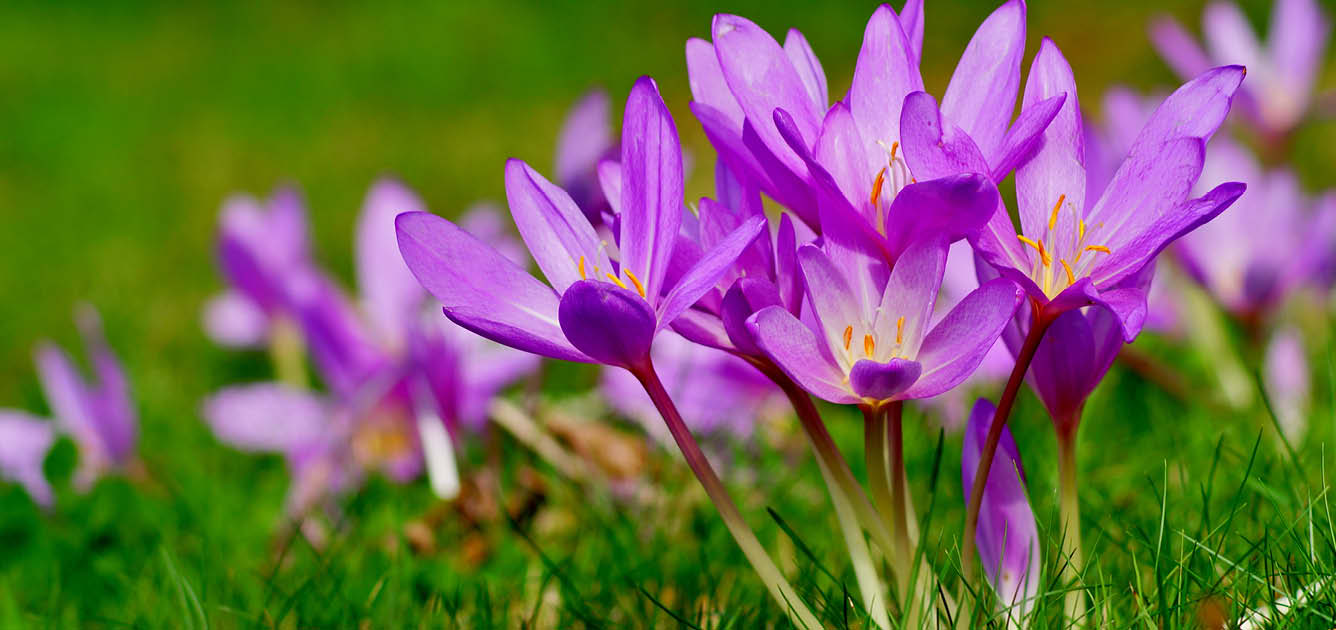
Producing multiple flowers per bulb, Colchicums offer plenty of colour as the rest of the garden transitions into Autumn.
With the end of the summer comes the opportunity to enjoy autumn flowering crocus. They are unusual plants in that they produce flowers without any foliage and their violet-pink flowers open widely when the sun shines. Whilst the rest of the garden is slowing down, these little beauties can keep the show going!
As members of the lily family (Liliaceae) there are roughly 65 species worldwide. The UK's native variety, Colchicum autumnale, can be found in damp meadows in the western half of Britain, pushing through the grass in early September.
Popular cultivated varieties include ‘Water Lily’, with large double lilac-pink flowers, ‘The Giant’, which is one of the tallest and most free flowering, and ‘Dick Trotter’, a charming variety with large flowers which is excellent for naturalising. There’s also a white variety, Colchicum autumnale ‘album’, with goblet-shaped flowers appearing from September into October.
Also flowering around this time of year is the Saffron Crocus, which are used to create the spice saffron from their flower stigmas. Be prepared to grow them en masse though, as you need around 150 bulbs to create one gram of dried saffron!
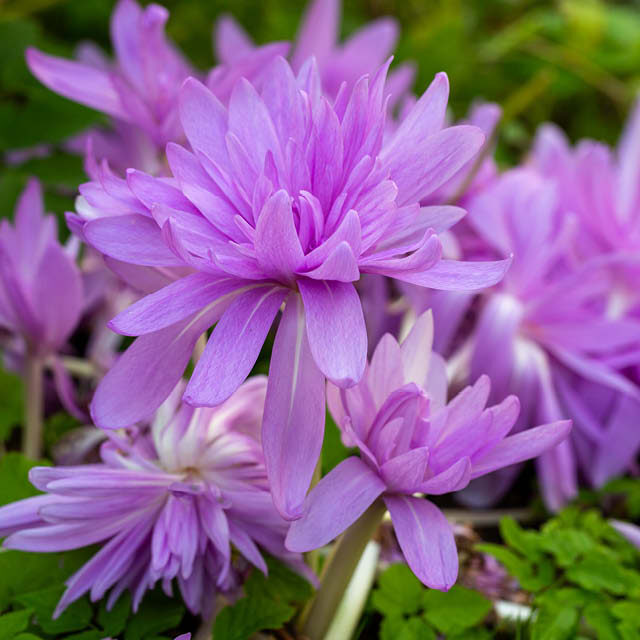
‘Water Lily’, features large double lilac-pink flowers.
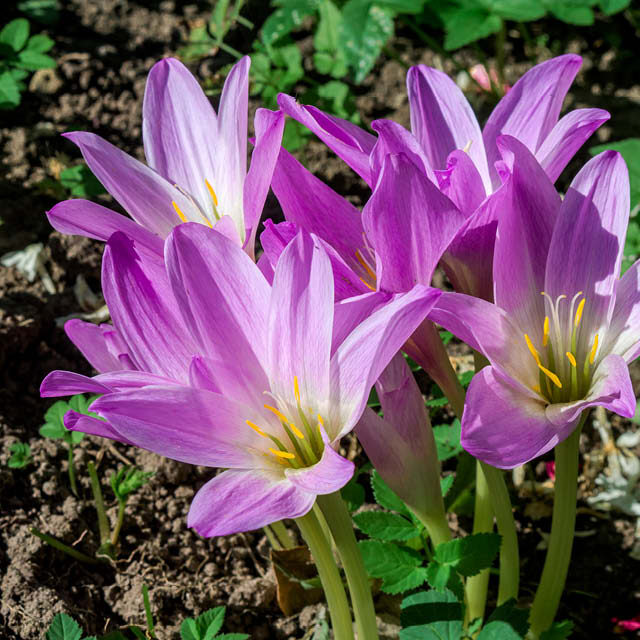
‘The Giant’, is one of the tallest and most free flowering Colchicums.
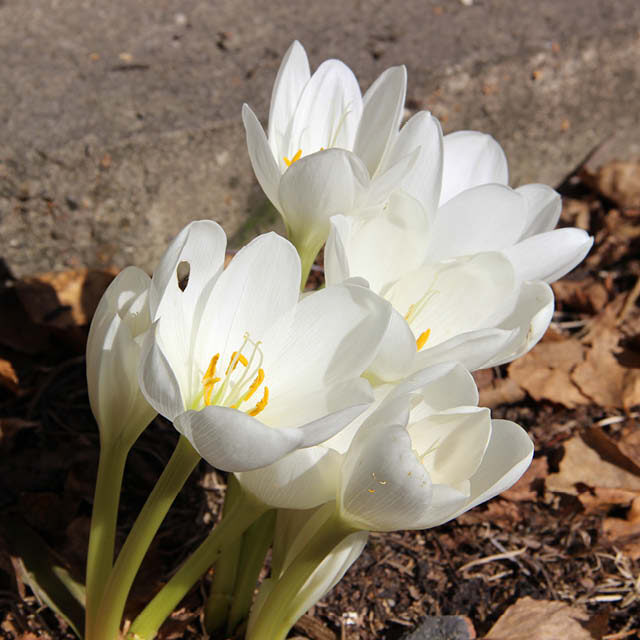
White variety, Colchicum autumnale ‘album’, with goblet-shaped flowers.
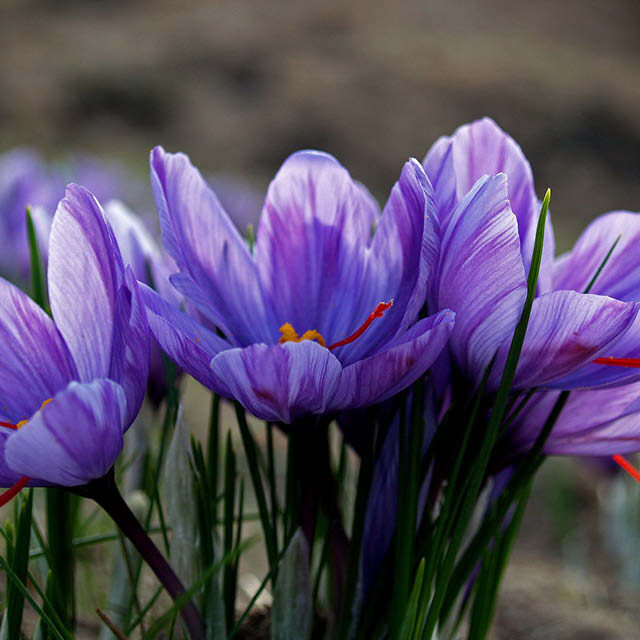
Saffron Crocus, are used to create the spice saffron from their flower stigmas.
All colchicums need deep, moisture-retentive, fertile soil to flower well. They're best grown in a sheltered, protected spot that enjoys afternoon sun because this encourages a good succession of wide-open flowers. In deep shade, you'll only get a very few spindly ones. All varieties will generally spread and are perfect for naturalising in grass under a semi-mature specimen tree.
They'll also perform well in pots using a 50:50 mix of grit and John Innes no.2. Plant the bulbs 15-20cm apart at a depth of 10cm with the pointed end facing up. Remember to handle them with gloves as all parts of the bulb are poisonous. The upside of this is that they'll be left alone by grazing animals.
They partner well with grasses, Nerines, and Schizostylus (Hesperantha). They also do well when naturalised under deciduous shrubs and in small gardens, particularly when planted in a sheltered sunny spot.
- Wear gloves when handling
- Great for naturalising or growing in pots
- Provides colour and interest into autumn


